This vegan custard is every bit as creamy and comforting as you’d hope, yet there’s no dairy, eggs or gluten.
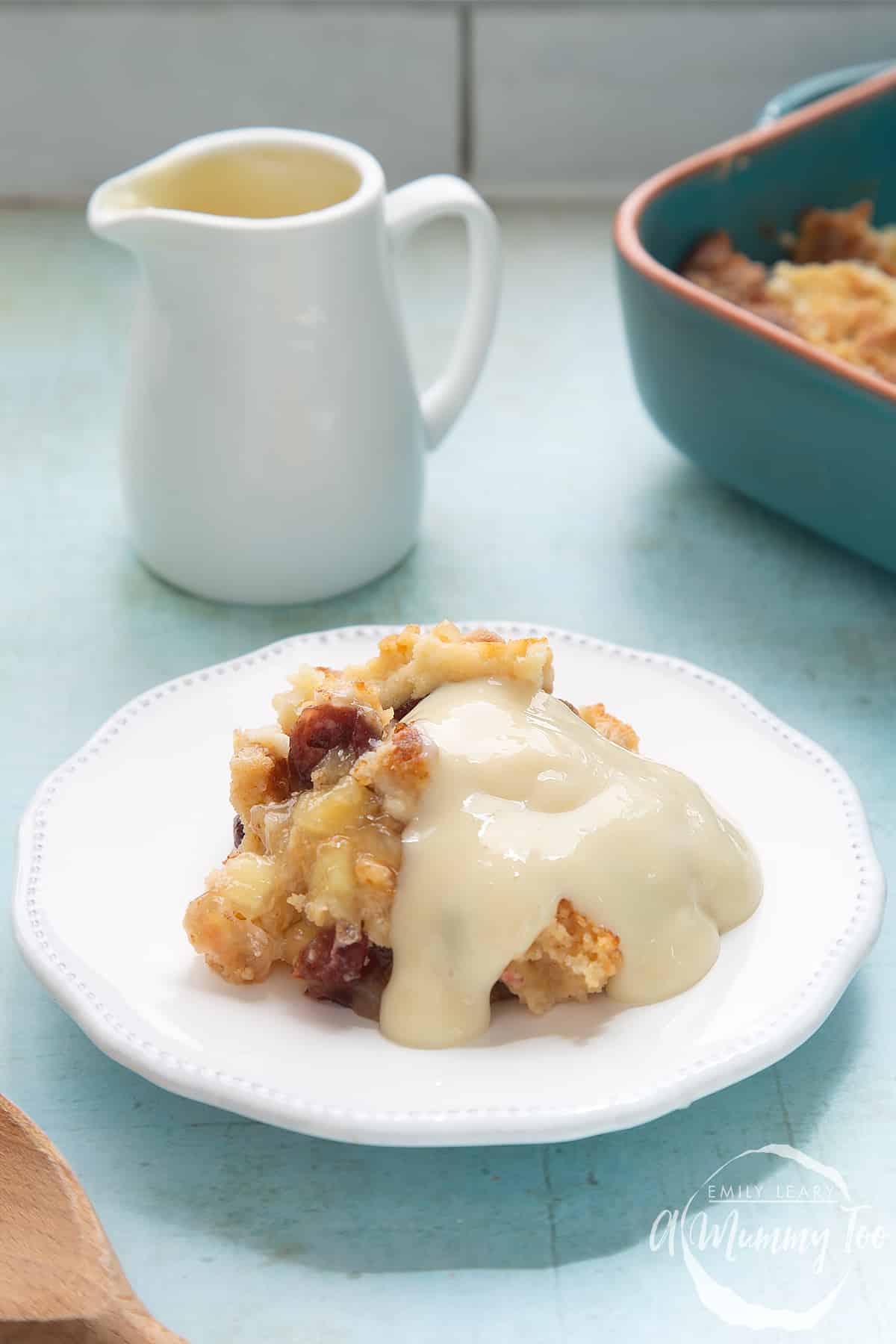
It’s made with cornflour, vanilla and plant milk, plus a secret ingredient that helps stabilise and bring creaminess to the custard.
What's the secret ingredient? It's vegan cream cheese! It sounds weird, I know, but trust me, it helps to bring the emulsion together and give a truly creamy texture you'll adore.
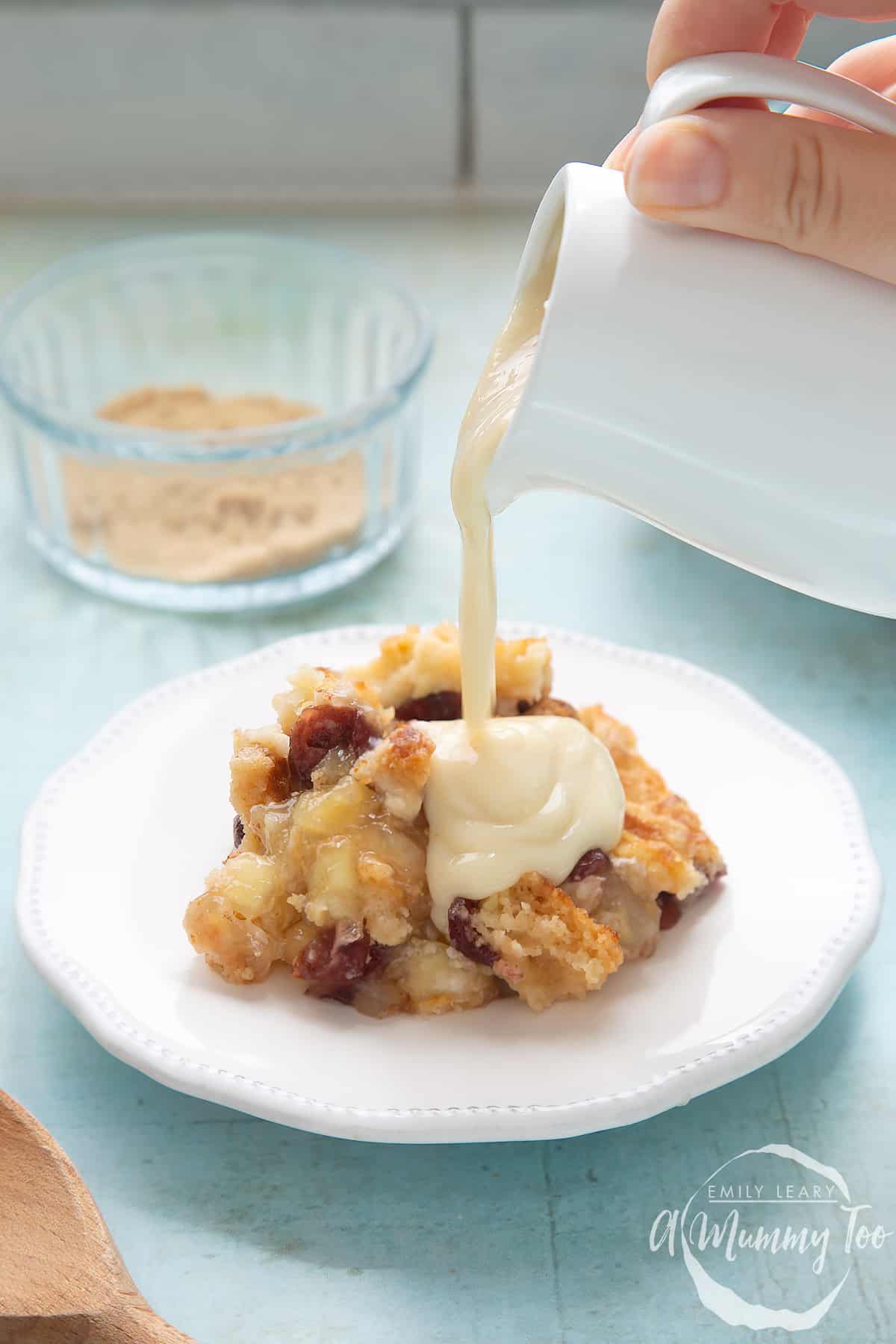
Ingredients
- 400 ml (13.5 floz) unsweetened plant milk
- 4 tbsp soft light brown sugar
- 2 tsp vanilla extract
- 4 tbsp cornflour (cornstarch)
- 3 tbsp plant-based cream cheese
Instructions
Put the milk, sugar and vanilla in a pan and whisk together. Note you can use white sugar but using a more golden sugar helps with the final colour of the custard.
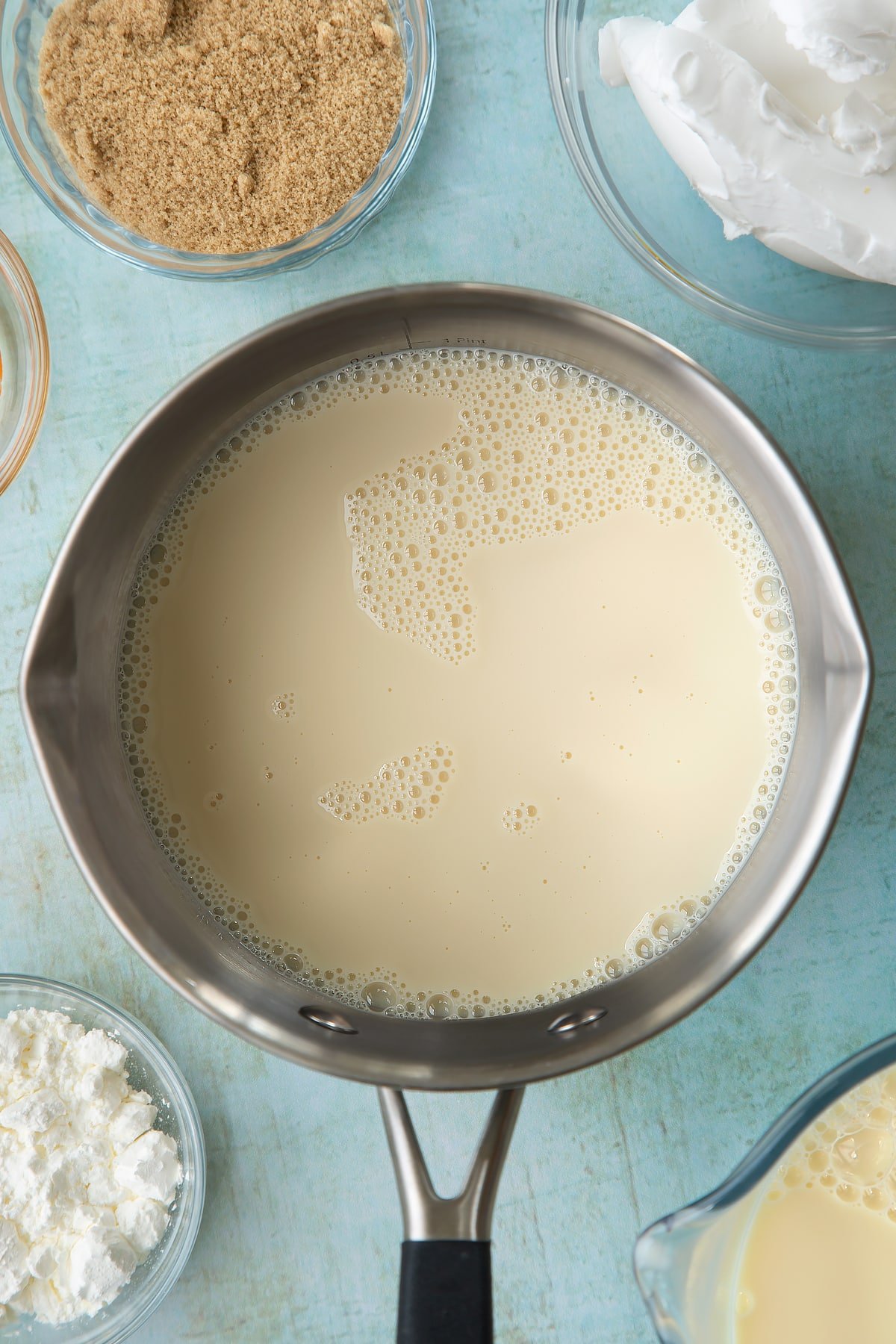
Put the cornflour in a small bowl.
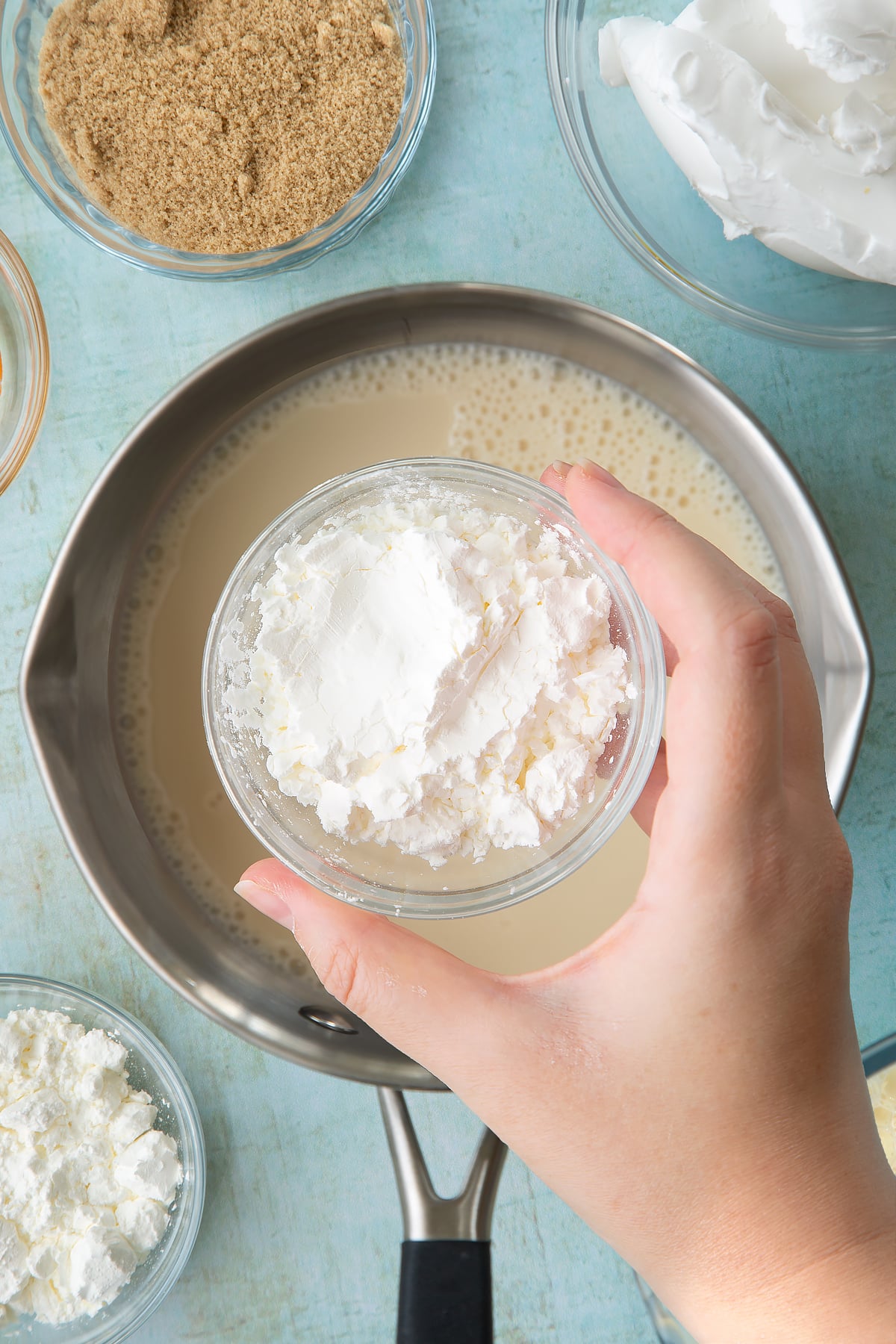
Add a couple of tablespoons of the milk from the pan.
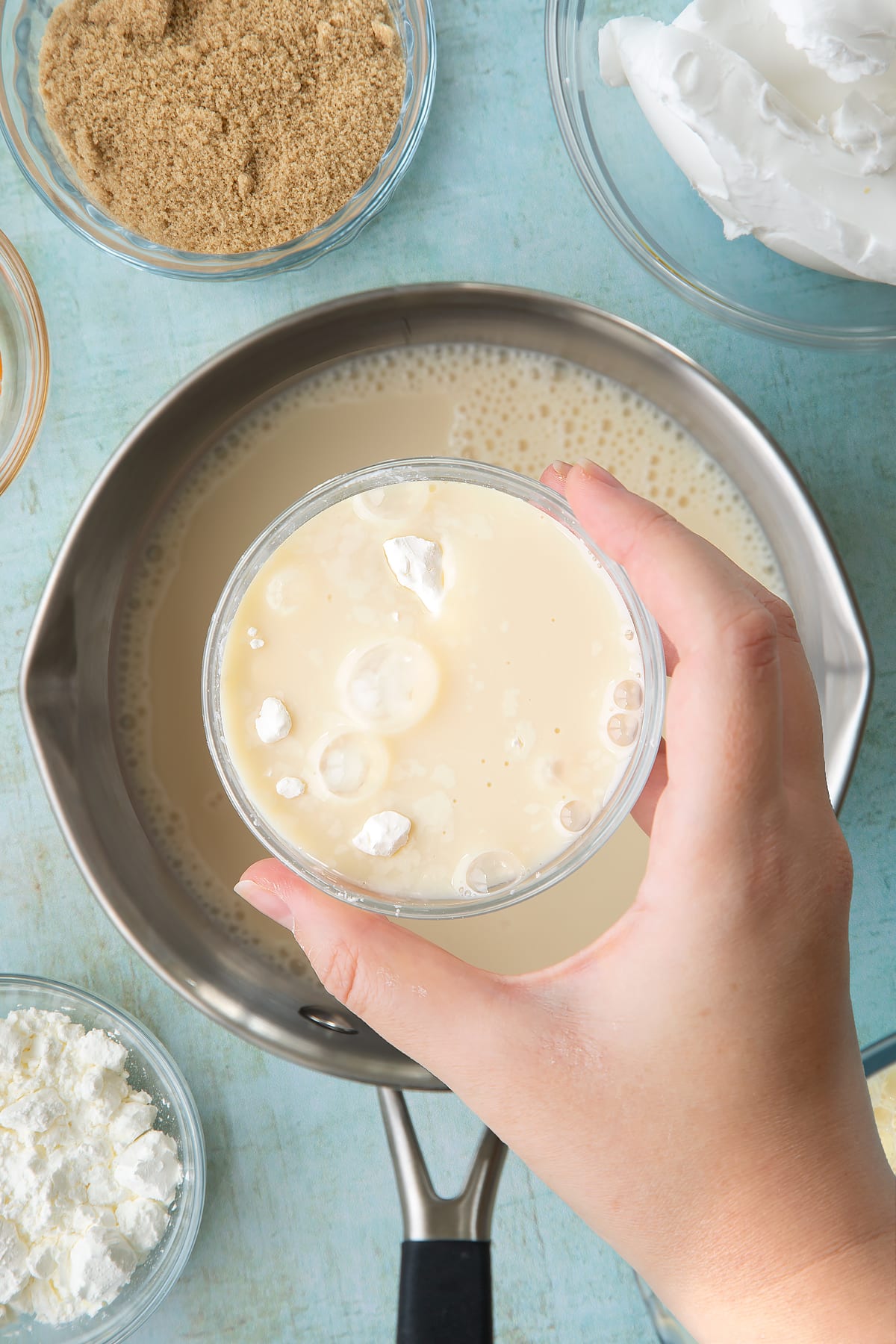
Mix to form a thin, lump-free paste.
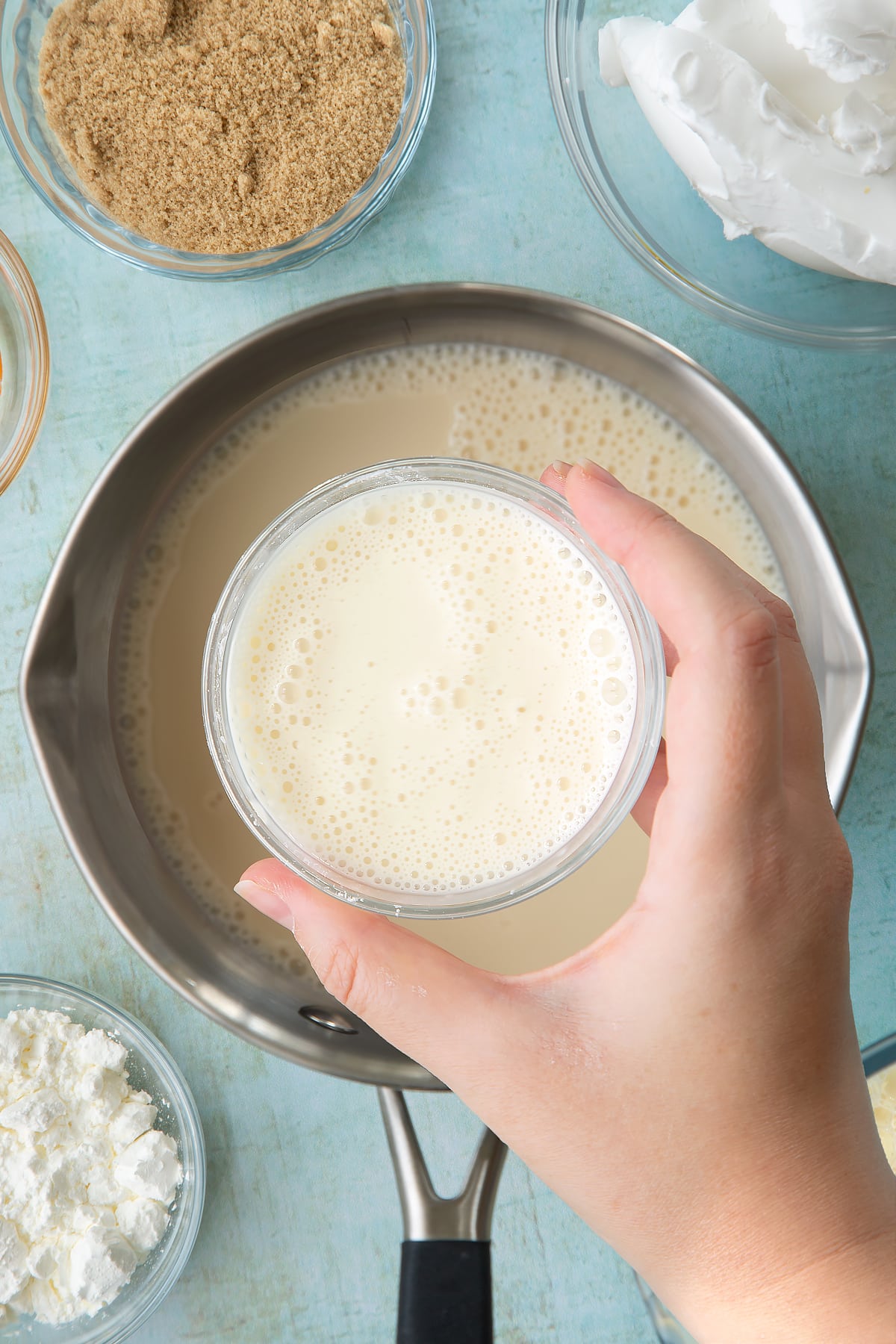
Add the cornflour mixture to the milk pan and whisk to combine. Warm the pan of milk over a medium heat, bringing almost to the boil while whisking until thickened.
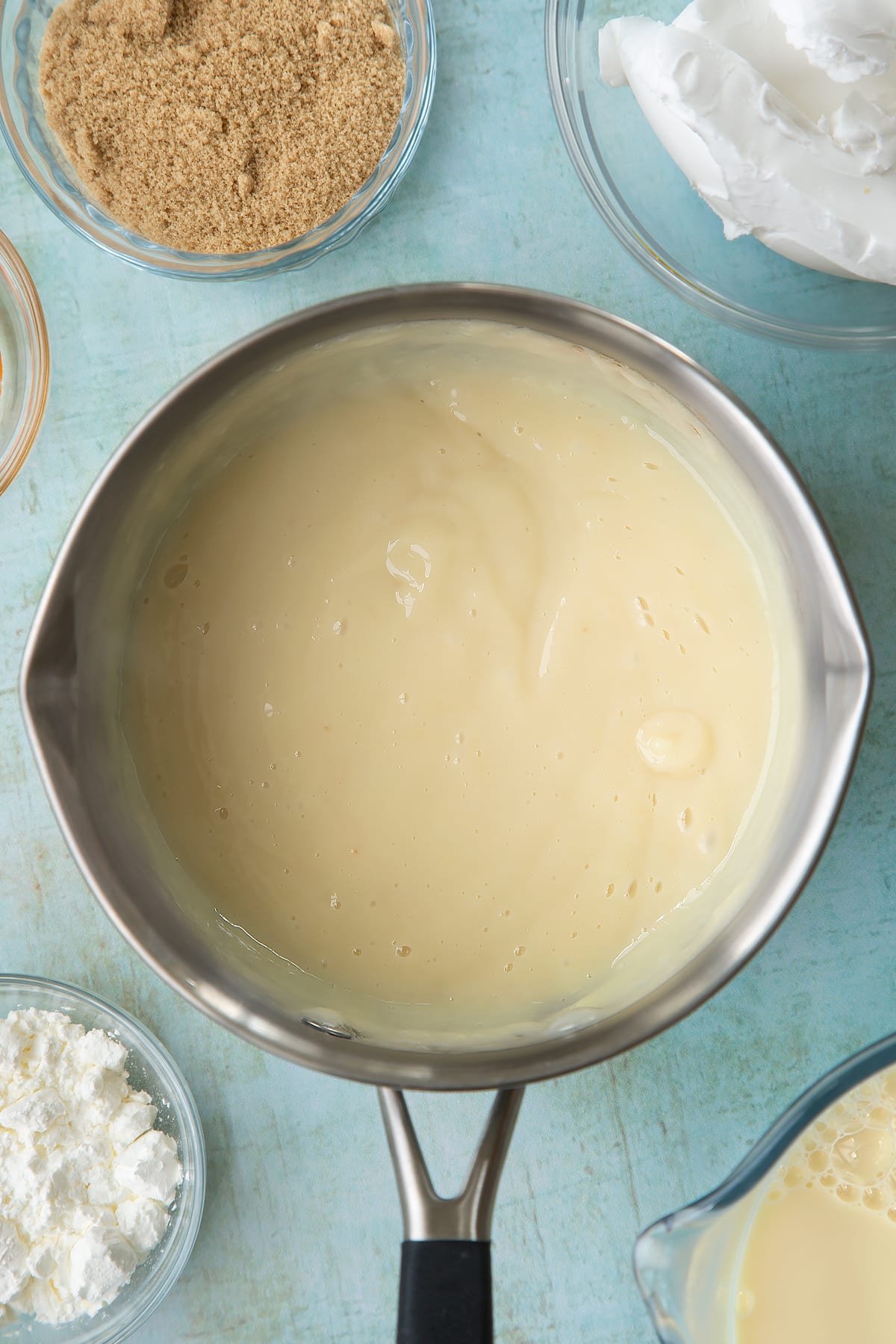
Take off the heat, add the cream cheese.
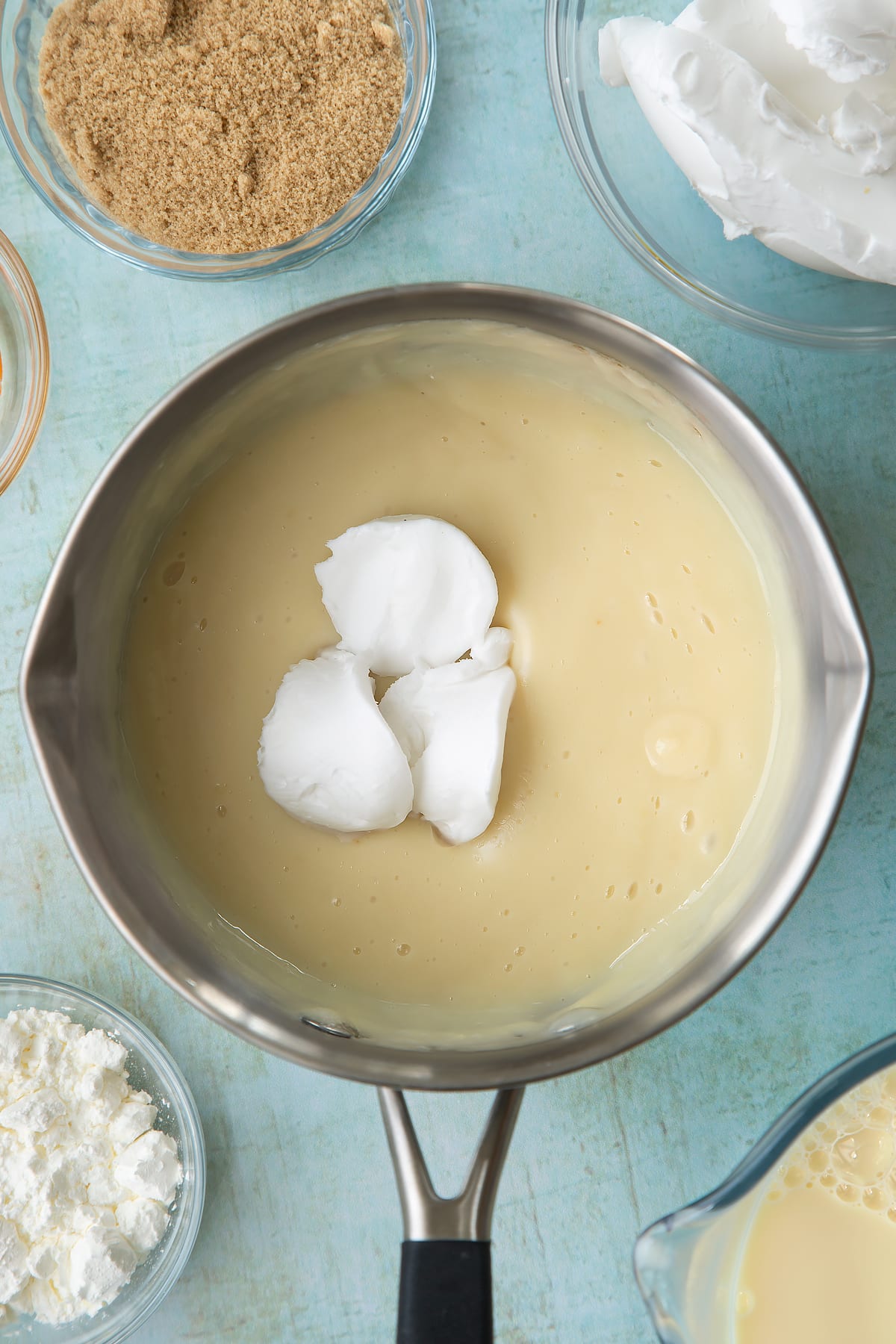
Whisk vigorously until all lumps are removed.
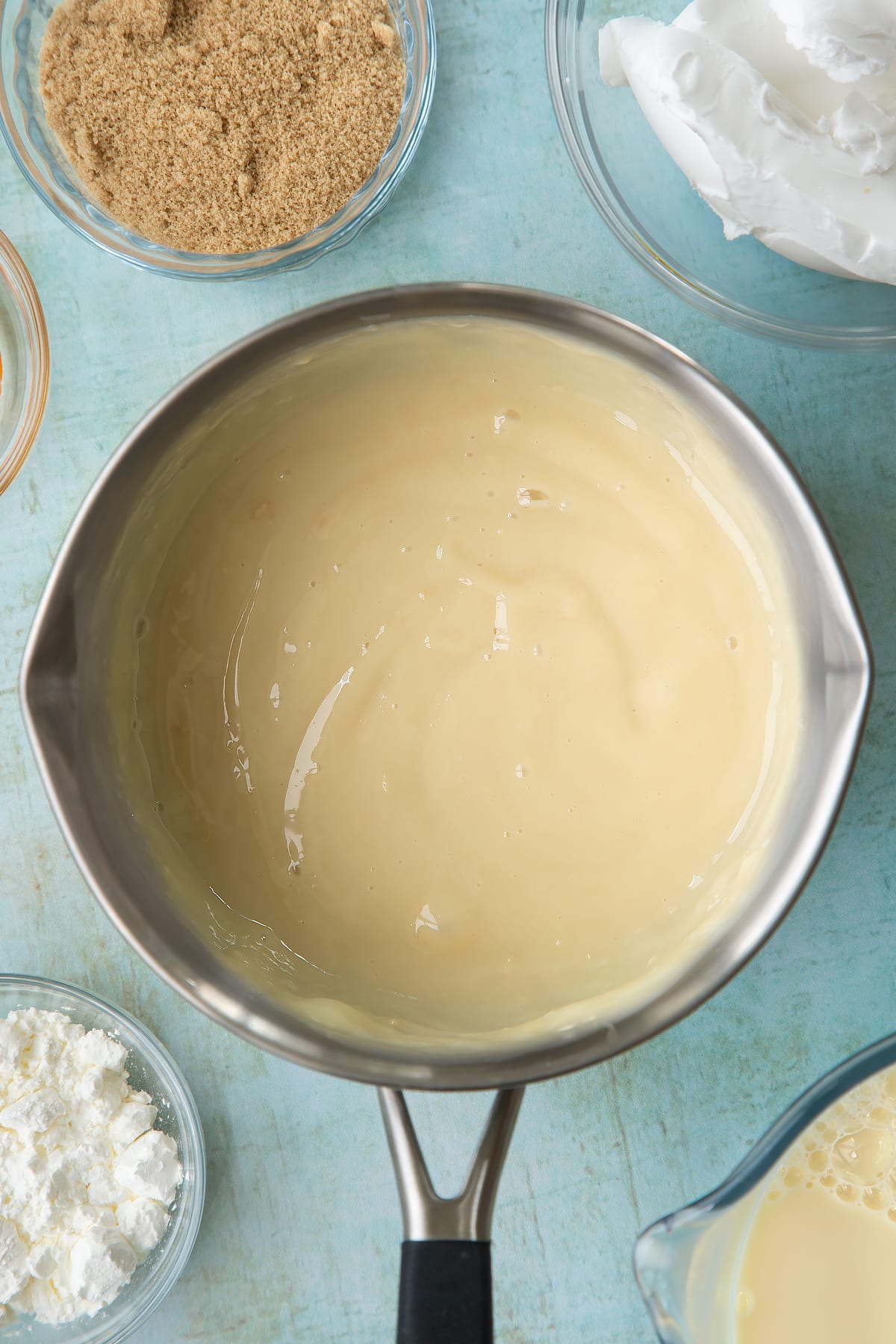
Enjoy with your favourite dessert.
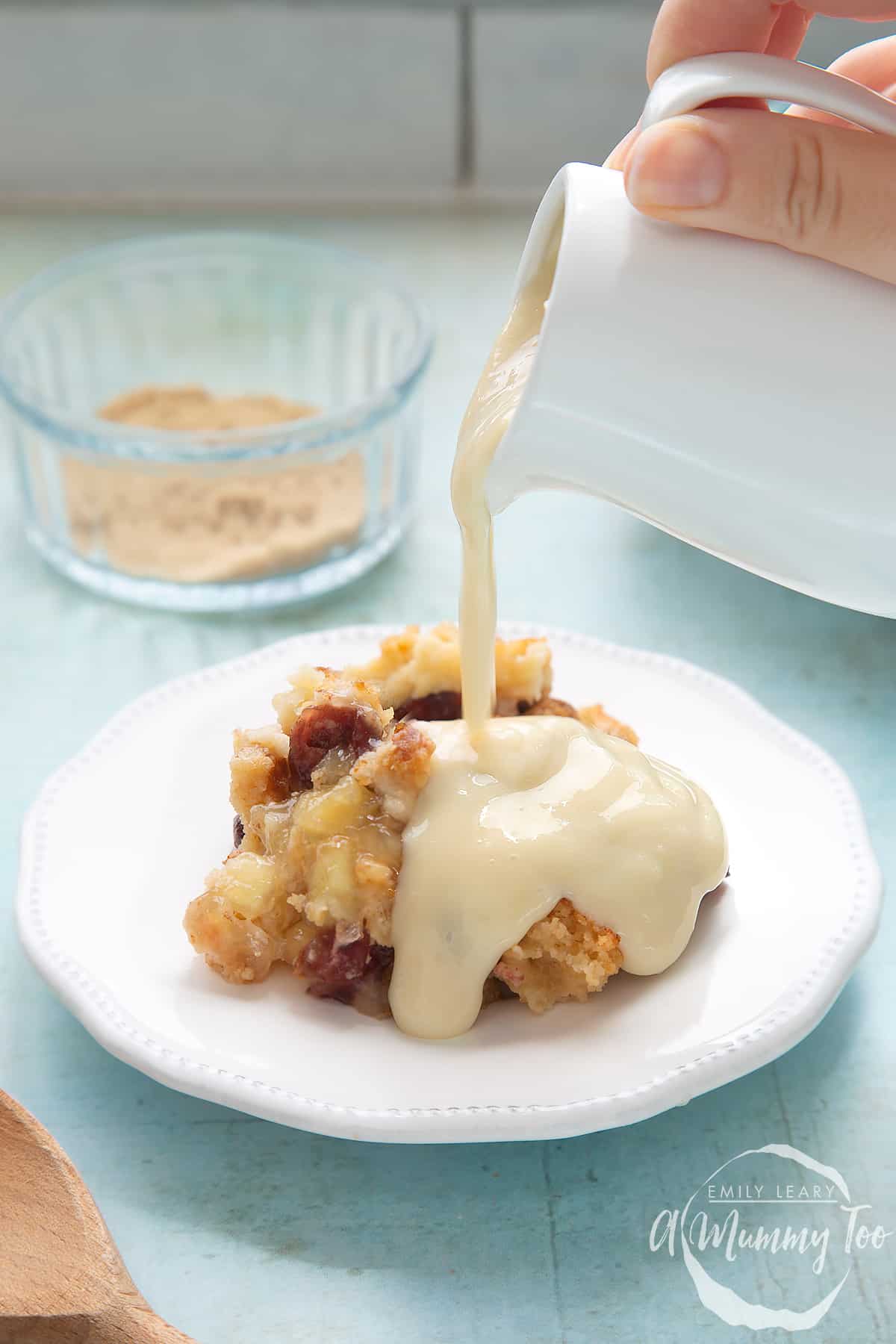
Note! The custard will keep thickening as it cools. If you want to thin it out again, just whisk in some more plant milk.
Pointers, tricks and troubleshooting tips for the perfect vegan custard
Is vegan custard easy to make?
This vegan custard is so simple to make - you'll only need one pan.
In fact, since this recipe uses cornflour rather than eggs, it's easier than making regular custard from scratch!
Will I need any special equipment to make vegan custard?
You should be able to find everything you need to make vegan custard in the average kitchen.
You'll just need a pan to heat the plant milk, a small bowl, a whisk, and a jug to serve if you wish.
Where can I buy plant-based cream cheese?
Most supermarkets in the UK have a "free from" section in the chilled aisle, so you should be able to easily find a few different options there. My personal favourite Violife, which is coconut-based.
Some items in the free-from section are lactose-free but still made with dairy milk so be sure to check the label if you are making this for someone who is vegan.
Also make sure to get a plain vegan cream cheese, not one with herbs or black pepper in as although they would be delicious on a bagel, they will not work well in custard!
How can I tell if plant milk has gone off?
Once opened, plant milk needs to be kept in the fridge.
Different types of plant milk will have different manufacturer's advice. Some need to be kept in the fridge all the time, while others can be stored in the cupboard until they are opened and only then need to be chilled.
Usually, you need to consume plant milk within 5 days of opening, and always within the use-by date. Always check the label.
Unlike cow's milk, plant milk doesn't go sour as quickly so it's not as easy to tell if it is off. The consistency will change and go lumpy or clotted and it will taste sour, but it often won't smell as strongly as gone off cows milk. Pour a little into a glass so you can have a look at it.
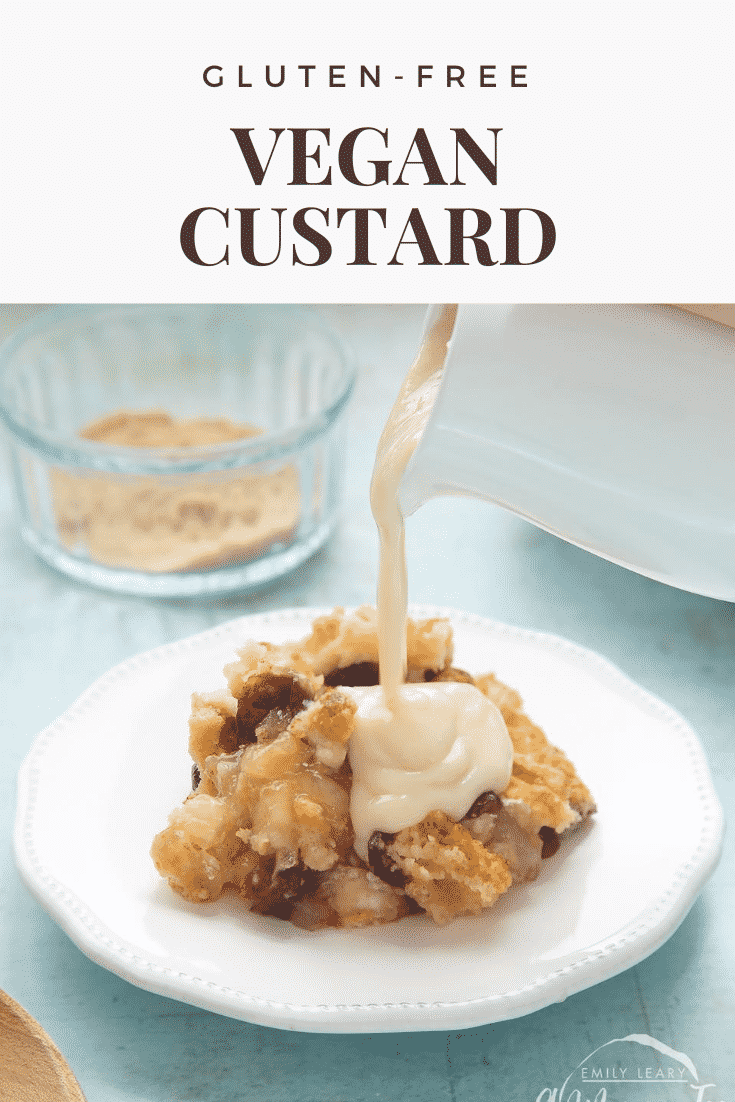
Is vegan custard dairy-free?
Yes, this custard contains no dairy as it is made using plant-based milk and plant-based cream cheese so it is totally delicious and totally dairy-free.
Do check the ingredients on everything you use if you are cooking for someone who needs to follow a dairy-free diet.
Is this recipe suitable for vegetarians and vegans?
Yes, this custard is suitable for vegans and vegetarians.
You'll be amazed how delightfully rich and creamy this custard tastes! Make sure to use plant-based milk and cream cheese to ensure all elements of the recipe are suitable for a vegan diet.
Is vegan custard recipe gluten-free?
For this vegan custard, we are using cornflour as a thickening agent, so the recipe contains no wheat-based products and is gluten-free.
Make sure to check all ingredients if you are making this for someone who needs to avoid gluten in their diet, some plant milk and plant-based cream cheese may contain traces of gluten.
Is this vegan custard keto-friendly?
This vegan custard contains sugar so would not be suitable for a keto diet. You could try making it with a sweetener in place of the sugar, if you wish.
Is vegan custard healthy?
This vegan custard is made with sugar so should be enjoyed as an occasional indulgent treat.
Is vegan custard safe to eat while pregnant?
Nothing in this vegan custard recipe should be an issue for a pregnant woman, as long as all the ingredients are in good condition and the custard is prepared hygienically in a clean kitchen.
This website does not offer medical advice, if you have any concerns speak to your health professional. In the UK the NHS has a great resource of foods to avoid whilst pregnant which might be helpful to have a look at.
What goes well with vegan custard?
This vegan custard is perfect for rounding off so many desserts. Keep it classic with a fruit crumble, dump cake or how about trying it with a slice of this yummy vegan date and walnut cake.
You can also use this recipe as an alternative to dairy custard to make layered or filled desserts like trifle or to top off a banoffee pie.
Can I make vegan custard without plant-based cream cheese?
The vegan cream cheese is what helps to stabilise and emulsify the custard. This recipe will still work without the plant-based cream cheese, but it won't be as thick and creamy if you leave it out.
Try to include it if you can, especially if you are using this recipe as part of a layered dessert.
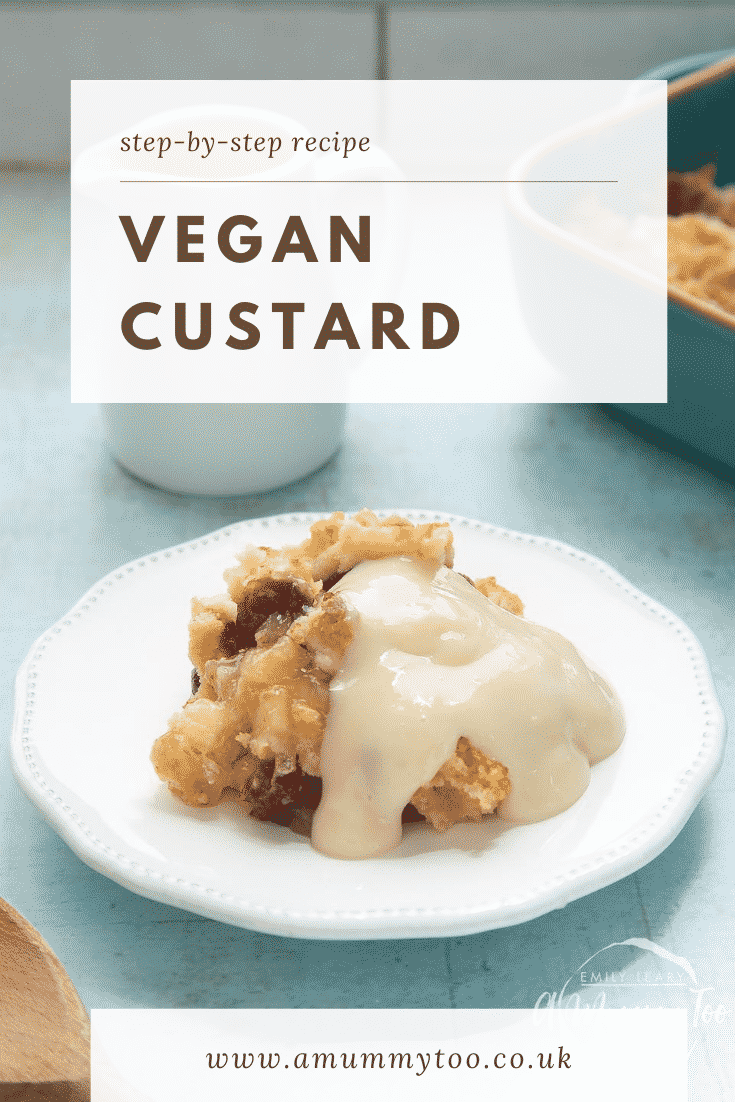
I haven’t got brown sugar, can I use caster sugar?
You can indeed use any white sugar such as granulated, icing or caster sugar instead. Try to use brown sugar if you can just because this helps add colour to the custard as well as giving it a more rounded, slightly caramel taste. White sugar will work just fine too but your custard will be quite pale.
There are so many different types of sugars and sugar alternatives you can experiment with. I haven't tried them all yet, so let me know how you get on.
You could even try using a plant-based sugar syrup like maple or agave or even coconut sugar, just keep in mind these are sometimes sweeter than sugar so you will need less.
Alternative sugars will also bring a different flavour to your custard so have fun experimenting and let me know how you get on.
How should I store vegan custard?
Any leftover vegan custard needs to be placed in the fridge within an hour of making, as you would with dairy custard.
Either keep it in the jug and cover with clingfilm or a beeswax wrap, or transfer it into a sealed container.
The custard will continue to thicken up, so may not be pour-able after it has been in the fridge. If your custard is too thick to pour you can warm it up on the hob or in the microwave and whisk in a little more milk to thin it out to your preferred consistency.
How long will my vegan custard keep for?
Your vegan custard will keep for up to 5 days in the fridge if you've used a freshly opened carton of plant milk and stored it correctly.
Can I leave vegan custard out on the counter or does it need to be kept in the refrigerator?
This vegan custard needs to be kept in the fridge if you have any leftovers. It should not be left out on the counter.
Cover well or transfer to a sealed container and place in the refrigerator within an hour of making.
Can I make vegan custard ahead?
You can make vegan custard ahead, and depending on what you are using it for this might be preferable.
Keep in mind that your custard will continue to thicken up over time so if you want to use it as a pouring sauce to have with a hot dessert like apple pie, you will need to reheat while whisking in a little extra milk to make it pourable again.
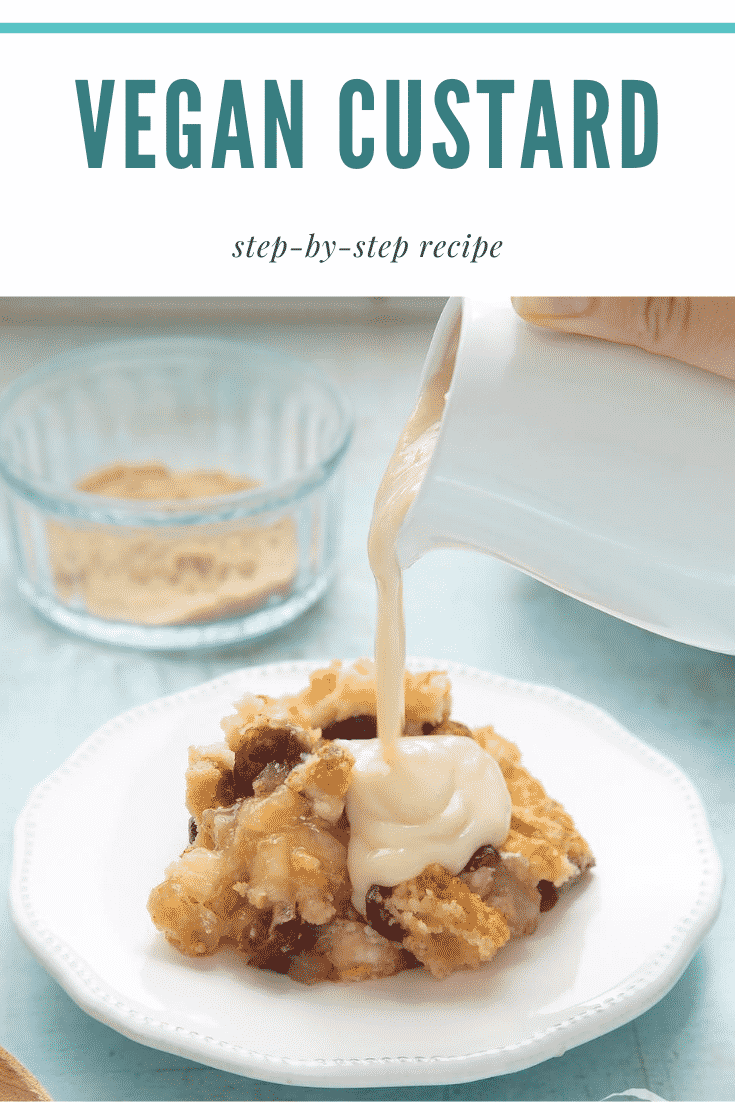
Can I freeze this recipe?
Some plant milks are not suitable for home freezing as they have a tendency to separate so check the label on yours. It will keep in the freezer for up to 2 months.
As with dairy custard, this does separate when it's frozen. But you can reheat it to nearly the same consistency as the freshly made custard. To revive frozen vegan custard, let it thaw out in the fridge for a few hours, or overnight. Put all the custard, including any separated liquid into a suitable size pan, and warm over a low heat stirring continuously.
It will go through a few phases of weirdly split and lumpy until it gradually warms and melts back into a smooth custard. Just keep whisking - it can take about 5 minutes to come back to a good consistency.
If it's too thick you can add a splash more plant milk.
What is the best way to reheat this recipe?
I find it easiest to reheat this vegan custard in a saucepan on the hob. That way, you can keep an eye on it and give it a good stir as its warming up.
You might need to add a little more plant milk as its warming if your custard has gone solid in the fridge. Use a silicon balloon whisk if you have one as this will help get rid of any lumps whilst not scratching the pan in the process.
Can I make vegan custard in a different quantity?
It is really easy to make different quantities of vegan custard, and unlike traditional custard, you don't need to worry about how to get half an egg yolk!
Simply scroll down to the bottom of this page where you'll find the recipe card. On there is the number of servings, just click or hover over this and a slider will appear that you can adjust to get the amount you want to make. This will automatically amend the quantities for all the ingredients so you're ready to go.
What's the best plant milk to use for vegan custard?
When baking and cooking, I usually like to use unsweetened soya milk as I find the consistency the best, and for me, it has the most neutral flavour. However, this recipe will work just as well with any plant milk, so use your favourite.
Be mindful that some types of plant milk have stronger flavours than others which will affect the taste of the custard. Some are also more prone to splitting when heated than others.
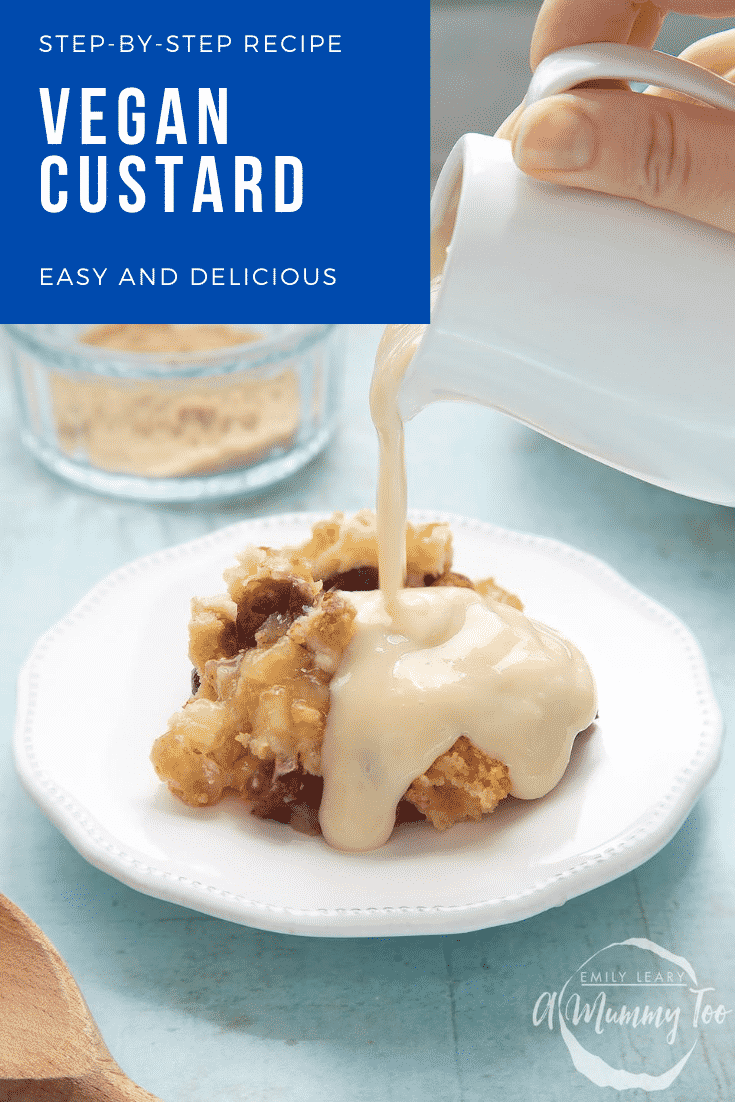
Do I need to use a bain-marie or double-boiler?
You can make this vegan custard straight in the saucepan. There is no need to use a bain-marie because there is no egg yolk, which is usually a concern with standard non-vegan custard as it risks splitting if gets too hot.
Why did my custard turn out lumpy?
If your custard was very lumpy, it could be because the cornflour wasn't fully mixed in with the splash of plant milk before adding the mixture into the pan.
If you add dry cornflour straight into a pan of hot milk, it will generally form into lumps. That's why it's important to mix the cornflour with a small amount of cold milk first until smooth (squash any lumps with the back of your spoon). That way, when it's added to the pan of cold milk, it is able to easily spread throughout the liquid, rather than forming into lumps.
Once the cornflour-milk mix is added to the pan of milk, whisk it well to combine, then heat the milk almost to the boil, whisking as it begins to thicken.
When you have a consistency you like, take the pan off the heat before adding the cream cheese. This is another moment for potential lumpiness, so keep whisking until all the cream cheese is mixed in thoroughly. You should be able to get all the lumps fully incorporated.
When reheating your vegan custard, it may go lumpy. Just add a little more plant milk and keep whisking over gentle heat until the custard is warmed through. The lumps should eventually dissolve back into the custard.
Why did my vegan custard turn out watery and thin?
When using cornflour, you need to give it time and heat to work its magic and absorb some of the liquid from the milk. This expands and makes the custard thicken.
It is important to start with cold milk when you are mixing a little with the cornflour at the beginning. Once there are no lumps in the cornflour milk mixture, it's time to add it to the rest of the milk in the pan.
Gently heat the milk until it's nearly boiling. It's vital to get the milk to almost 100C (212F) for the cornflour to work effectively.
Keep stirring until the custard has thickened - this can take up to 5 minutes. Give it time and don't leave it unattended. It will all of a sudden come together and thicken up really quickly.
Why did my vegan custard taste bland and look pale white?
Custard has quite a gentle flavour - it's as much about the rich mouth feel as it is the gentle vanilla creaminess.
Taste the custard once you've whisked in the cream cheese - this changes the flavour experience because it helps emulsify the mixture. If you feel then that it needs more vanilla, you can whisk in an extra teaspoon.
The type of plant milk you use may also affect the flavour so keep this in mind when choosing which one to use.
This vegan custard is a little paler than its egg-yolk based counterpart, that is why this recipe uses brown sugar to help bring a little colour. However, neither vegan nor dairy custard is bright yellow. Canned and instant custard usually contains food colouring to achieve that classic yellow hue.
If you would like a more yellow look to the custard, you can add a drop of natural yellow food colouring. You could also try adding the tiniest bit of turmeric powder, but no more than a tiny, tiny pinch (less than 1/8 tsp) as otherwise it will affect the taste.
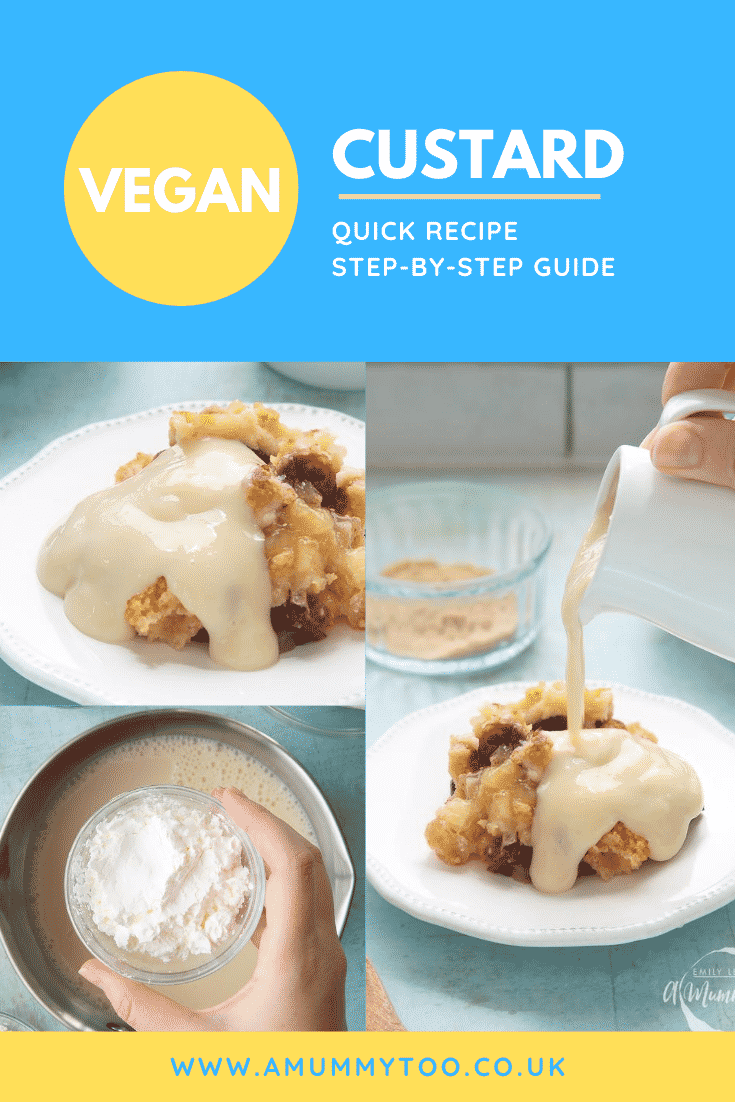
How can I change the flavour of vegan custard?
You can easily use this recipe as a base for a vegan chocolate custard too. All you need to do is add a tablespoon of cocoa powder. Mix the cocoa powder with two tablespoons of plant milk as you did for the cornflour into a smooth lump-free paste and add it in!
If you want to make it super indulgent you can melt about 30g (1 oz) of dark, dairy-free chocolate into the custard too. Add it to the pan as the milk is warming, before you add the cream cheese.
Lemon is also a lovely flavour for custard especially if you are using it for pastries. Use the zest of one lemon to replace the vanilla extract. Avoid adding lemon juice as it may cause the custard to split.
Print this vegan custard recipe
Vegan Custard Recipe
Ingredients
- 400 ml (13.5 floz) unsweetened plant milk
- 4 tbsp soft light brown sugar
- 2 tsp vanilla extract
- 4 tbsp cornflour (cornstarch)
- 3 tbsp plant-based cream cheese
Instructions
- Put the milk, sugar and vanilla in a pan and whisk together.
- Put the cornflour in a small bowl.
- Add a couple of tablespoons of the milk from the pan.
- Mix to form a thin, lump-free paste.
- Add the cornflour mixture to the milk pan and whisk to combine. Warm the pan of milk over a medium heat, bringing almost to the boil while whisking until thickened.
- Take off the heat, add the cream cheese.
- Whisk vigorously until all lumps are removed.
- Enjoy with your favourite dessert.
Video
Notes
Nutrition
If you enjoyed this recipe then you'll likely also enjoy this delicious malt loaf bread and butter pudding.
Pin this vegan custard
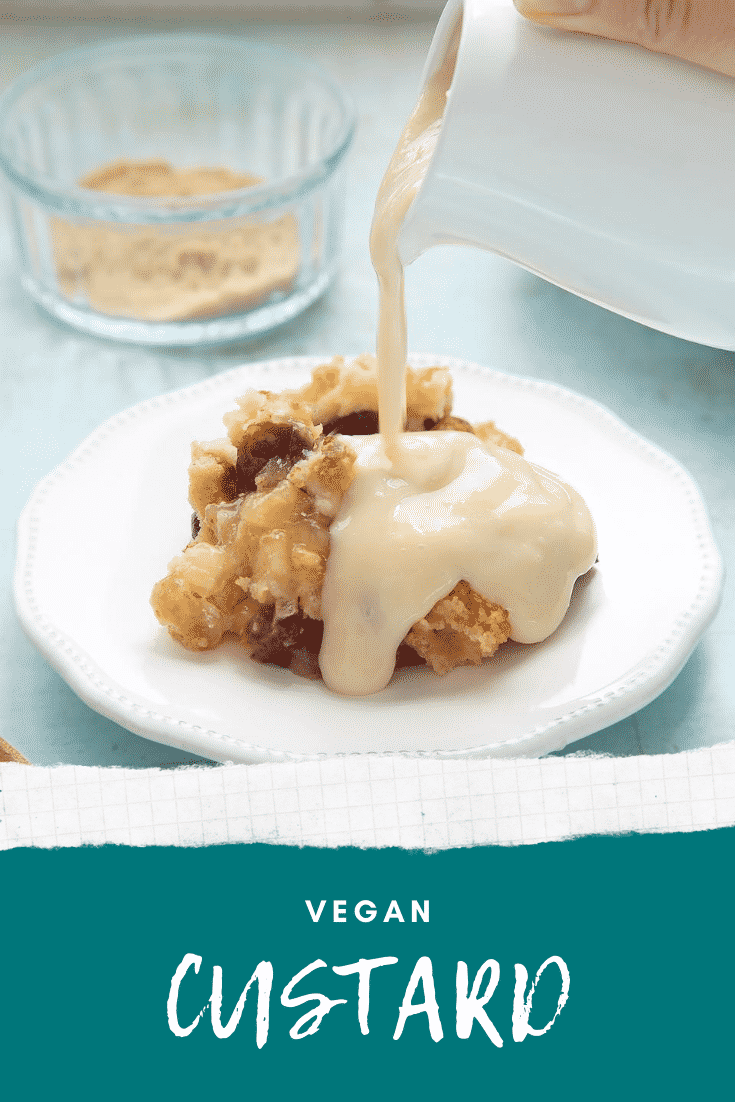
More vegan sweet treats to try
Have you got my book?
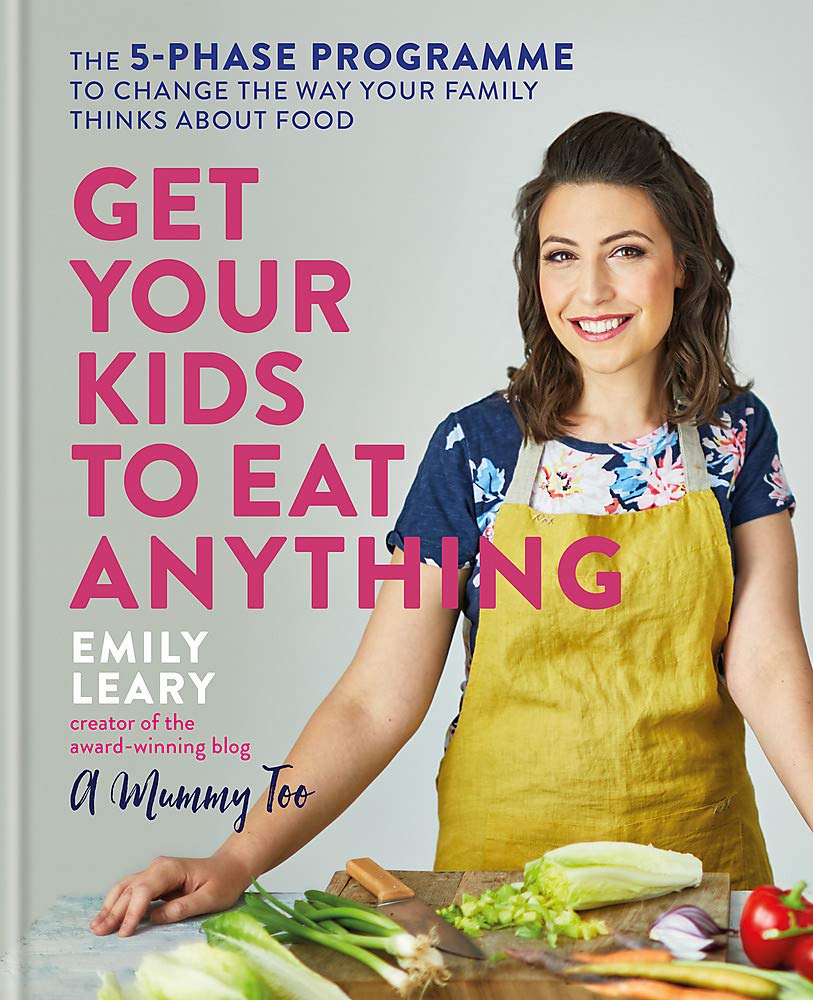
'This is a great kids cookery book. Emily is a star' - Simon Rimmer
'The book I'd like to force into any mother's kitchen' - Prue Leith
"A fab book with a plan." - Jane Devonshire, 2016 Masterchef UK winner
'Emily has managed to combine her mummy knowledge and passion for food to make a truly helpful and brilliant cookbook' - Priya Tew, RD, BSc (Hons), Msc
Get Your Kids to Eat Anything is an achievable 'how to' for parents in the battle to overcome picky eating and 'make new the norm'. Emily Leary's unique 5-phase programme looks at the issue of 'fussy eating' in a holistic way that links imagination with food, and which situates parents alongside - not in opposition to - their children.
.

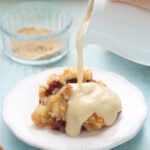
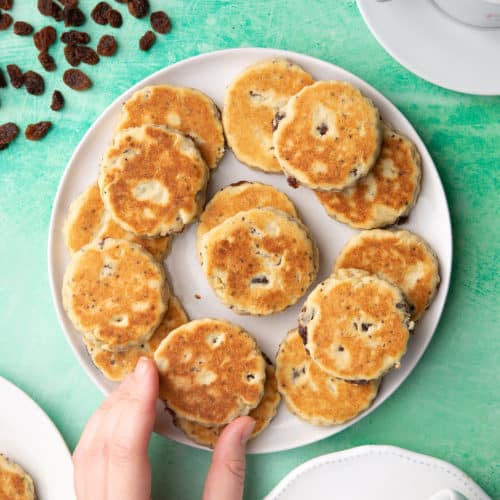
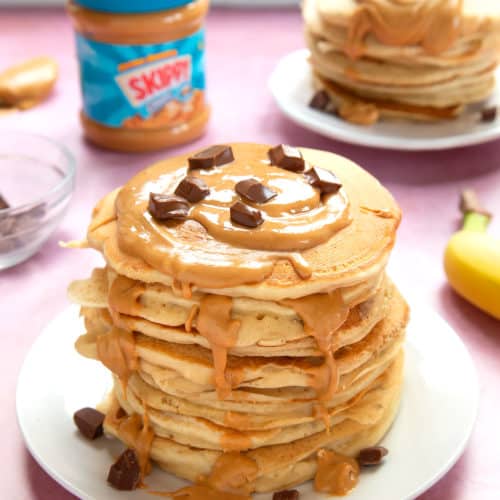
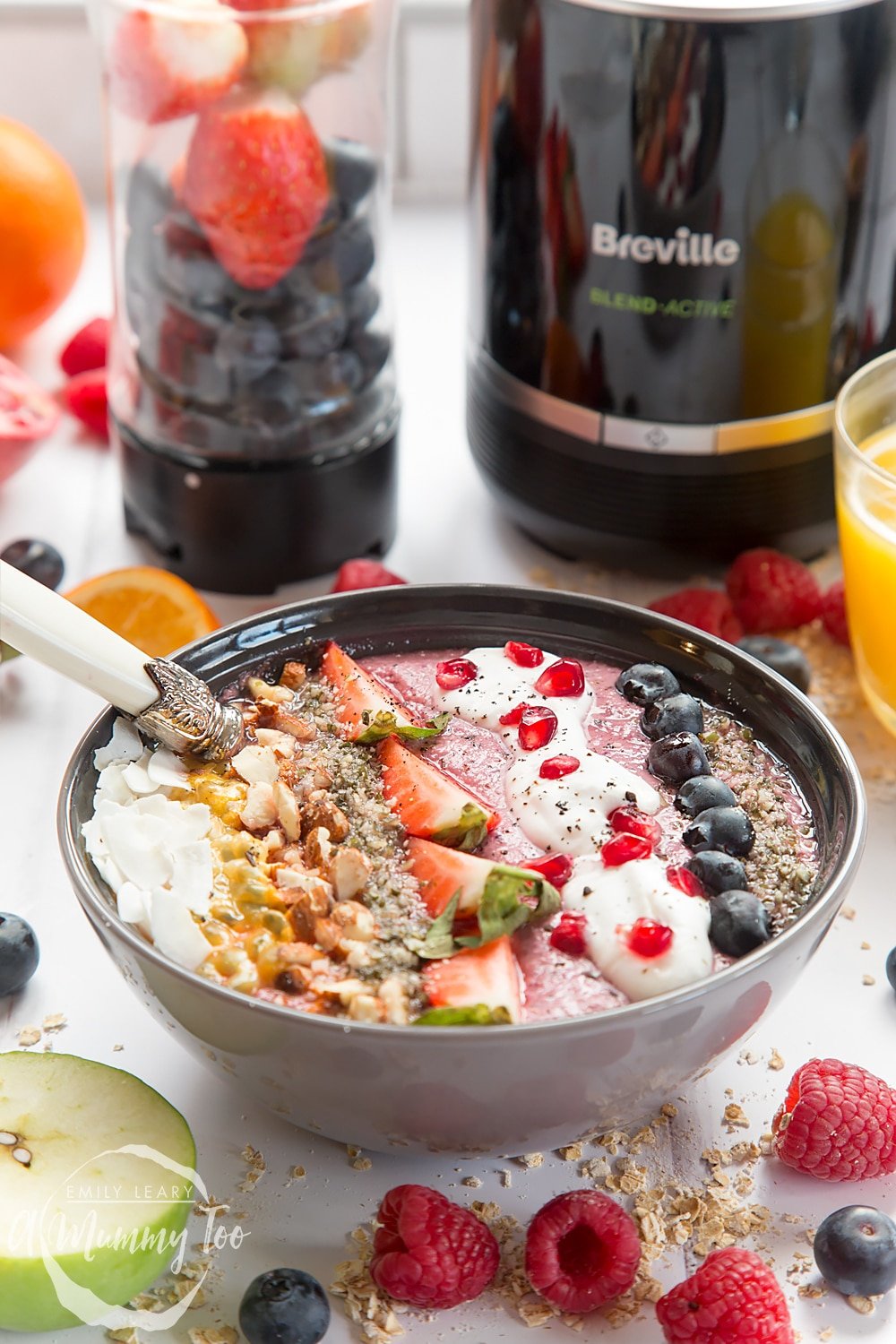
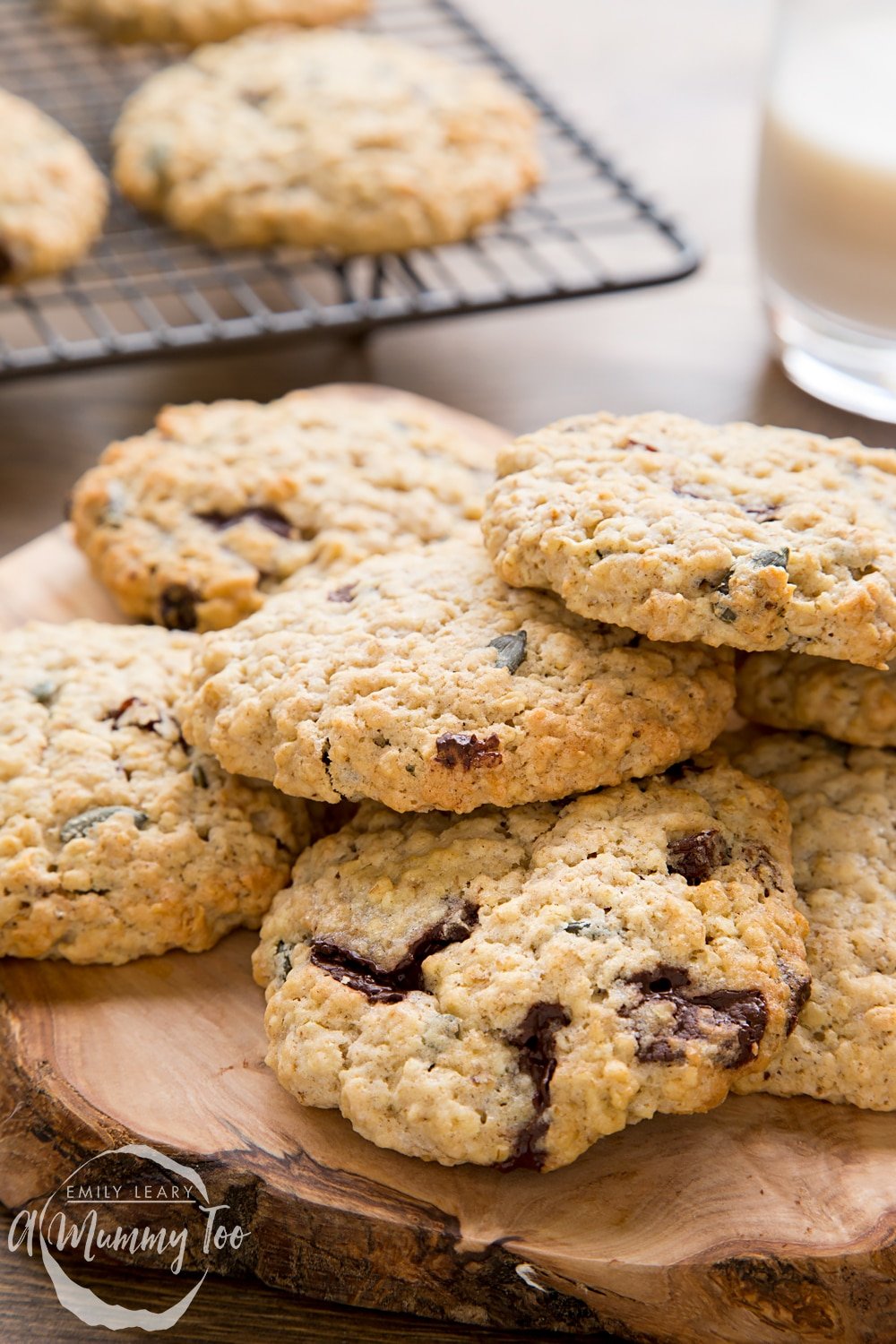
Kate - Gluten Free Alchemist says
Adding vegan cream cheese? genius! The custard looks utterly rich and divine. Pinned x